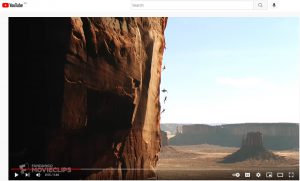Traditionally, law lectures are generally didactic in nature, with limited student participation or interaction, which is usually reserved for weekly tutorial classes.
However, in response to recent student evaluation surveys and guided by evidence-informed teaching approaches, a brave group of Sydney Law School unit coordinators decided to change the ‘traditional lecture’ norm by transforming the style and delivery of their lectures to encourage active learning and direct student participation in their first-year classes.
In this article, we highlight a variety of successful strategies and tools we used to increase student engagement and support cohort building in three large, first-year law units of study. Each unit had a mix of face-to-face and online students, with lectures being delivered in HyFlex to ~350 students in one of Law’s largest lecture theatres.
1. Promoting interaction with edtech
Educational technologies such as the online polling app Mentimeter and virtual wall platform Padlet were used to embed relatively quick and safe (utilising anonymous posting features) interactive tasks into lectures. Activities ranged from quick ‘check understanding’ type questions and surfacing common misconceptions, to recapping points from previous sessions and feedback activities that had students reflecting on in-class tasks and assessment outcomes.
For example, in LAWS5000 Foundations of Law, Dr Fady Aoun made use of the anonymous nature of Mentimeter to tap into a bit of reflective practice. Students were asked to consider how they performed on an assessment – before and then after the feedback! Check out the drift of responses in the image below– there was some unwarranted confidence at the start of the session.

In LAWS1006 Foundations of Law, Micah Burch asked students their opinion on interesting and complex issues to spark rich and powerful discussions during class, harnessing the simplicity of Mentimeter’s multiple-choice questions. To add an extra layer and collectively investigate the ‘why’ behind the responses, he followed up the Yes/No questions with an open response question, where students shared the details and reasoning behind their answers (anonymously).


Similarly, Dr Gemma Turton in LAWS5001 Torts uses Mentimeter’s word cloud feature to draw out students’ existing knowledge and ideas during the introductory lecture. These ideas then drove the subsequent in-lecture content discussions. After the lecture, we uploaded the word cloud image to Canvas as an ongoing reference for students, where they were also taken up by one of the unit’s tutors to kickstart an in-tutorial discussion, helping to connect lecture content with tutorial activities.

As another example, Dr Fady Aoun in LAWS5000 Foundations of Law used Padlet during the introductory lecture as a conversation starter and to surface opinions that students might not be willing to verbalise in front of the whole class, perhaps because they are a bit too hard to articulate on the fly (with microphone in hand!) or maybe they feel uncertain of their answer and find it easier to test their reception from the safety of an anonymous post.
Pro tips for promoting interaction with edtech
- Think about your purpose – interactivity can come in many flavours – quizzes, reflections, and discussion to name a few. Try and think about what do you want to achieve and choose accordingly.
- Build interactive activities into the delivery time, but, as Dr Fady Aoun would say, leave some ‘breathing space’ for the unexpected.
- Reduce ‘interactivity fatigue’ by being intentional – use interactivity to intentionally support the learning purpose(s).
- Avoid ‘follow the leader’ syndrome – when asking online quiz questions, hide responses until most students have finished responding.
- Provide opportunities for review – the act of retrieving and reviewing information helps students learn.
2. Novel approaches to content converge using podcasts and videos
Using podcasts and video clips to deliver a portion of unit content not only frees up lecture time for interactive tasks, but also allows students to download and listen or watch anytime, anywhere.
For example, the LAWS5001 Torts teaching team created short podcast series on cases relevant to Torts. Each podcast has been made available via Canvas, for students to listen to at their convenience. Students reported that they really appreciated the ability to both read a case and listen to podcasts as it helped them develop their case reading skills. Here is an example podcast on Marion’s Case created by Associate Professor Penelope Crossley.

In LAWS1006 Foundations of Law, Professor Jamie Glister used YouTube movie clips as video prompts to generate large class group discussions weaving in discussions about foundational cases around certain concepts, ethical questions, etc. In this example, Prof Glister used the opening scene from the movie Vertical Limit to discuss ethical questions around murder. This was used to significant effect in the first lecture to demonstrate ‘law in action’, drawing on students’ existing knowledge and reasoning skills, to get in and start ‘doing’ law.
Pro tips for using podcasts and videos:
- Choose topics that are less likely to change – this allows you to reuse the items for years to come.
- Keep productions short – up to 10 minutes for podcasts and 20 minutes for videos.
- Prepare a script and have a practice run – listen to the content carefully and identify how it can be improved.
- Don’t sweat the mistakes – if you make a mistake, pause, and start your sentence again or, if appropriate, retain the mistake and use it as a teachable moment and explain why it is a common misconception, or why people make the mistake.
3. Lecture ‘mini-moots’ – a different approach to group work
‘Mini Moots’ are one of the most commonly used group activities in Law seminars. They are designed to promote cohort building and achieve learning outcomes related to presentation skills. But how do you run ‘mini moots’ in lectures, especially with large student cohorts?
In LAWS1006 Foundations of Law, Micah Burch takes the Moot Court from seminars and tutorials into the large class lectures. To scale this up, we still follow the structure of a regular moot court, adapting things a little to suit a large lecture environment:
- Instead of assigning roles to individuals, we assign roles to different sections of the lecture hall (e.g., the left side of the role assumes the role of advocates for one side, and the right side assumes the role of advocates for the other side). Online students are also assigned a specific role (e.g., judge).
- In each assigned section, students break up and discuss the case in small groups of 3-4.
- For the final wider group discussion, the teachers nominate spokesperson students from each section to share their collective ideas.
- A ‘shelf’ Padlet is used to collect points from each section during the small and large group discussions.
What did the students think?

At the end of the semester, we asked the students to provide informal feedback on the lecture improvements. Responses were largely positive, with 85% of respondents either agreeing or strongly agreeing that the lectures were informative and engaging. A number of students even noted that lectures and discussions were their favourite part of the unit!

Want to know more?
The Sydney Law School is looking forward to implementing similar innovations into many more Law units of study, including core, elective, and Masters units.
If you are from the Sydney Law School and are interested in using the approaches highlighted above in your own teaching, contact Lana Kolta ([email protected]).





